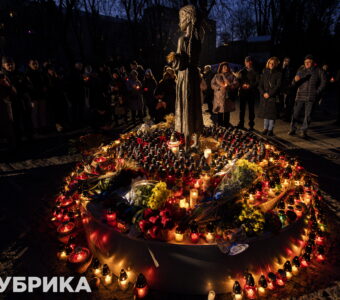Solutions to win: military personnel and volunteers team up to create EW defenses in Prykarpattia
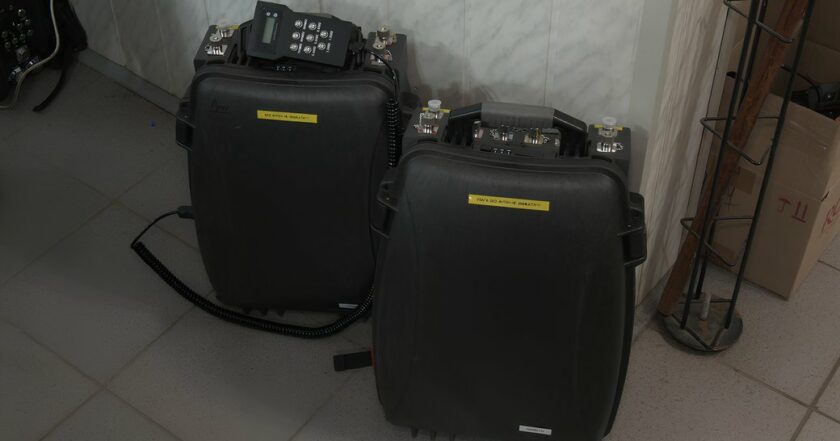
Photo: Suspilne
The military and volunteers established the production of electronic warfare equipment in Prykarpattia [most of the Ivano-Frankivsk region and parts of the Lviv and Chernivtsi regions – ed.]. In the workshop, which has been in operation for almost a year, they assemble, test, and send EW to the front.
Suspilne writes about how it was possible to establish the production of EW equipment.
What is the problem?
Currently, single-frequency electronic warfare devices are being sold, but they're no longer effective.
To conduct radio reconnaissance, one must have equipment for five or six frequencies, but they are quite costly on the market, with prices exceeding 700 thousand hryvnias.
What is the solution?
That is why the military and volunteers established the production of electronic warfare equipment in Prykarpattia.
At the workshop, which has been running for almost a year, they put together, tested, and dispatched electronic warfare equipment to the front lines.
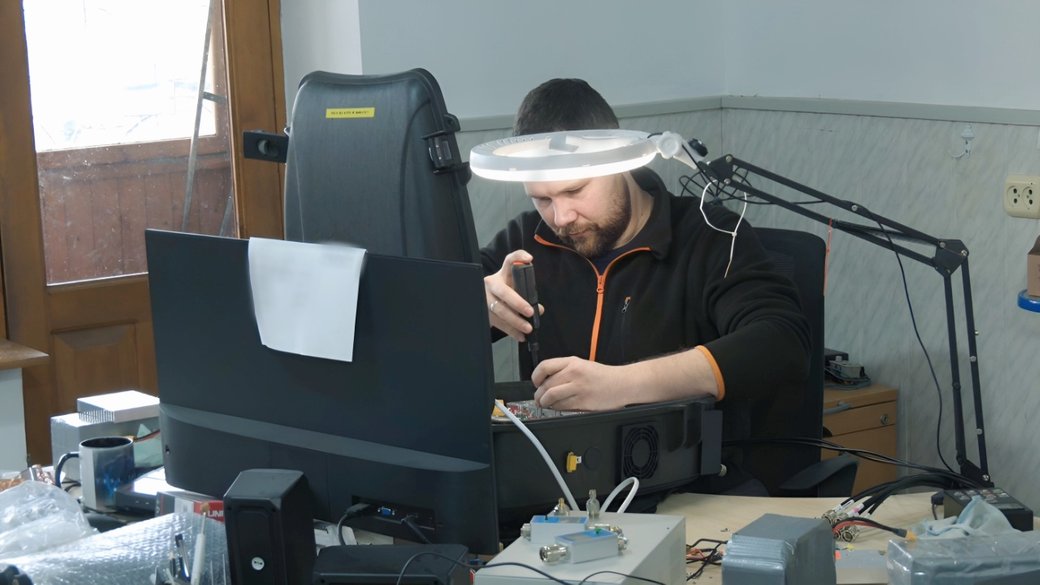
Photo: Suspilne
Dozens of devices designed by volunteers are used in several airborne assault brigades.
How does it work?
Liubomyr Andriiev, a soldier, is one of the initiators of the creation of a workshop in which EW equipment is collected. He fought as part of the 80th separate airborne assault brigade. After the injury, the soldier began working at the Air Intelligence Training Center.
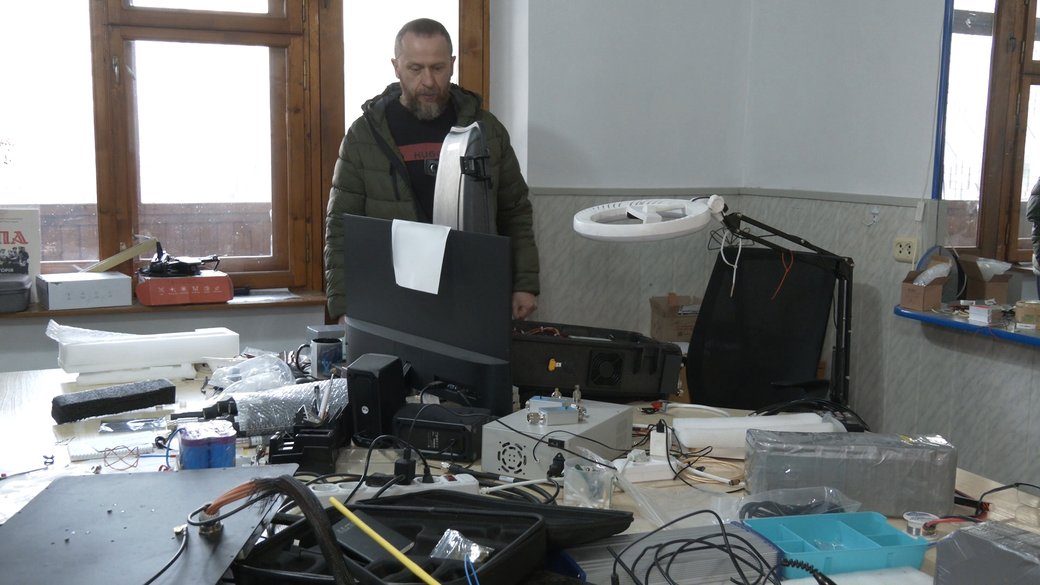
Photo: Suspilne
"The main direction of cooperation was the airborne assault forces. As members of those groups ourselves, we strived to create a well-suited tool for their use. After much experimentation, we discovered that a motorcycle backpack was the most effective and convenient piece of equipment. It can easily be worn on the back or transported in vehicles such as cars or armored vehicles without any complications," explains Liubomyr Andriiev.
This volunteer-built EW device is designed to resemble a 14-kilogram motorcycle backpack, complete with two varieties of antennas and a control panel. It was created approximately a year ago by Liubomyr Andriiev, who admits there were unsuccessful initial attempts, but the desired result was eventually achieved.
"We didn't develop this EW tool, and we are not some kind of developer. There were many such tools before us. We were simply forced to figure it out and, taking into account their cost on the market, we tried to make the devices cheaper," Liubomyr Andriiev says.
Vasyl Kravchuk, a volunteer, says the main task of EW devices is to protect equipment, positions, and soldiers from damage by FPV drones.
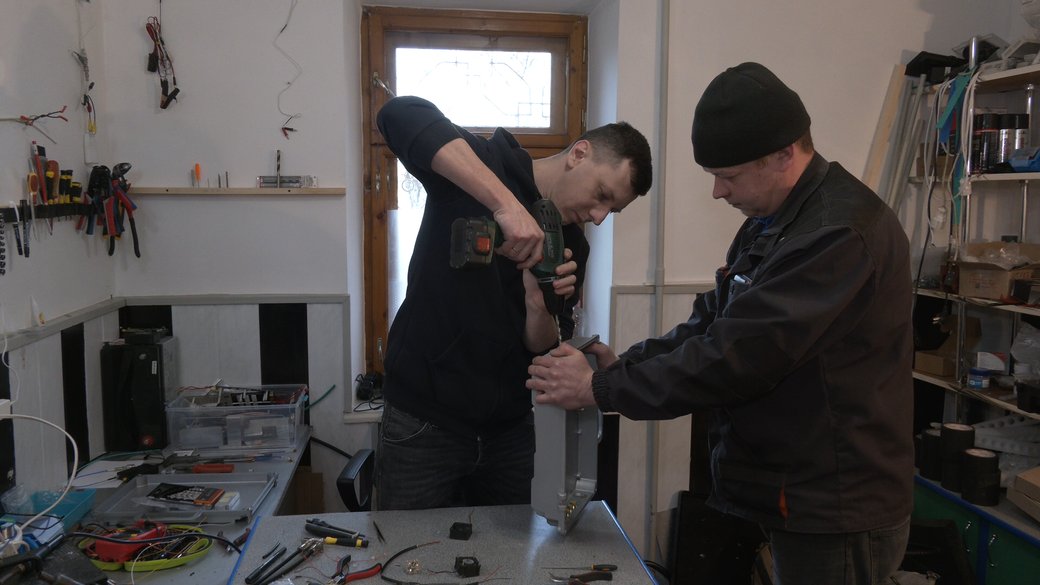
Photo: Suspilne
The workshop assembles devices with seven frequency ranges: four for FPV drones and three for DJI and Autel drones.
"We have a backpack with modules and antennas that can be installed both on the ground and the car. There is a switch that allows you to switch to an external or internal battery. On the remote control, you can turn on the frequencies you need. It is necessary for fighters to not only possess the knowledge of defending themselves against UAVs but also to be able to recognize them. This is why scanners are still used, allowing for the detection of approaching threats," Vasyl Kravchuk says.
According to Liubomyr Andriiev, the radio suppression range of the device is influenced by various factors such as the equipment used by the Russians, the location of the positions, and even the weather.

Photo: Suspilne
"The last time we were at the trials in Kyiv, the Mavic 3 flew a distance of 900 meters. However, some devices flew as close as 10 meters. Many commanders who tested them in real combat situations gave us favorable reviews," Liubomyr Andriiev notes.
At least five volunteers come to the front line daily to collect electronic warfare equipment. Among them are war veterans. For example, Andrii Nasada. The fighter fought from the beginning of the full-scale invasion of the Russian Federation as part of the 80th separate assault brigade. The soldier was wounded in the summer of 2022 near Bakhmut. Now, he is coming to the workshop to help design EW.
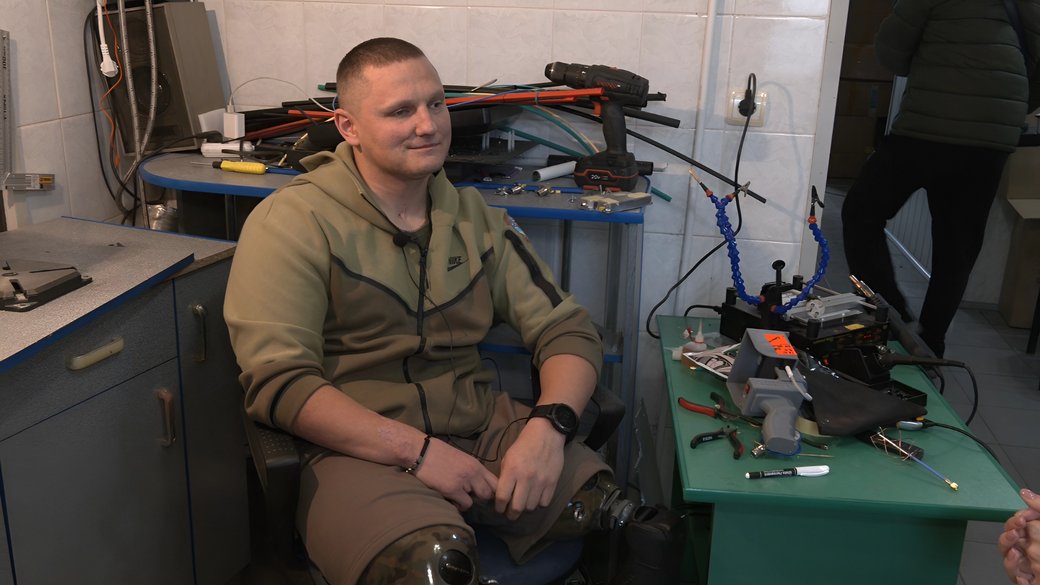
Photo: Suspilne
"I am currently undergoing rehabilitation. When I have time between massages, I can come here and help: twist something, assemble, disassemble, because I am new to this business," Andriy Nasada explains.
Vitaliy Ilechko, a volunteer, has gathered electronic warfare equipment for the military for approximately a year. He explains that his prior interest in electronics made it easy for him to join the business. He learned any necessary skills from his colleagues.
"Here, we assemble suppression systems and repair those sent to the front and returned after hostilities. I decided to join for the sake of victory. We have only one enemy, and our guys need support," Vitalyi Ilechko says.
The volunteer adds that motorcycle backpacks are sent to the front line after field testing.
"Before sending, we must be sure that the EW works as it should. We have devices that check its operation to see if it works and meets its characteristics," Vitaliy Ilechko mentions.
The founder of the workshop, Liubomyr Andriiev, says there are two high-tech directions at the front now – UAVs, and electronic signals intelligence, and EW. You can fight drones, which are pretty difficult to shoot down with small arms, only by radio-electronic means.
"Guys need more technological things that help in war, protect themselves, or hit the enemy. That's why we try. We help as much as we can. We try to move on and develop in this direction," volunteer Vasyl Kravchuk says.
For reference:
It was also reported that Ivan Pavlenko, the head of the Main Directorate of Electronic Security and Cyber Security of the General Staff of Ukraine's armed forces, stated that in some areas of the Ukrainian-Russian front, the Defense Forces capture 250-300 drones in the air at the same time.




